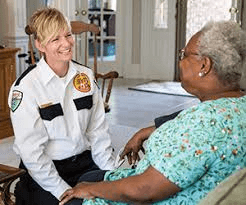 This post originally appeared in the Collins Report.
This post originally appeared in the Collins Report.
Municipalities face a changing demographic profile in the coming years and decades. By 2030, 28 percent of the Massachusetts population will be age 60 or older, and seniors will constitute at least 30 percent of the population in two of every three municipalities in the Commonwealth.
One of the municipal functions most heavily impacted by the aging population is emergency services. Based on preliminary research, the share of EMS responses for residents aged 65+ (47 percent) is three times the share of the population currently aged 65+ (16 percent) statewide. If these patterns of response and transport persist, demand for EMS services will grow dramatically in coming decades, with a more than 35 percent increase in demand for EMS expected by 2035, just for the population aged 65 and over.
Given the need to understand how aging populations will affect the finances of municipalities, the Gerontology Institute and the Collins Center for Public Management have partnered with the Lincoln Institute of Land Policy to study this topic. The research will attempt to address questions such as: How do aging populations impact municipal costs, particularly related to EMS? How do aging populations impact revenues, particularly related to EMS? How do changes in the size of the senior population correlate with changes in EMS calls? And what models have emerged to manage the impact of aging populations on costs?
The results of this research will help municipalities understand the financial impact of their own aging populations and begin to consider how they provide EMS and related services to their residents so that they can devise new strategies to meet the needs of an older population.
If you are interested in learning more about or contributing to this research, please contact Michael Ward at michael.ward@umb.edu.

Leave a Reply